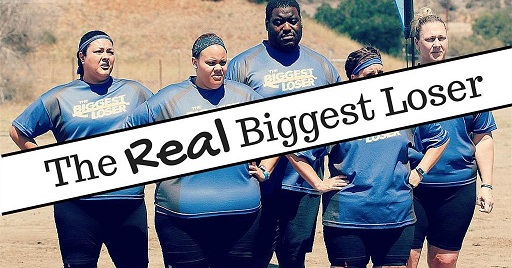Your Location:Home - Hot Topics > - Content
News and Information
Extreme Dieting: The Real Biggest Loser
Time:2016-05-05 13:23:47
Source:Food Insight

It is undebatable that losing excess weight and maintaining a healthy weight is good for you. Research shows that even modest weight loss can improve things such as blood sugars, triglyceride levels, and risk for heart disease. However, excessive weight loss (more than one to two pounds a week) may do more harm than good.
After extreme weight-loss programs that are not analogous to real life, it is being discovered that people have (surprise, surprise!) gained all their weight back plus more. In fact, there are numerous studies to suggest that the majority of those who complete a weight loss program regain most of their weight. How could this be?
It turns out our bodies may be resisting extreme weight loss. Though more research needs to be done as to why this is, newer research suggests that extreme weight-loss programs may cause physiological changes that promote weight gain, such as changes in appetite-regulating hormones, appetite, and metabolism.
Fruits and vegetables
Not only is extreme weight loss affecting your body at a physiological level, but extreme dieting is only a short-term solution. Let’s face it: An extreme weight-loss lifestyle is not sustainable. Do you have two hours or more a day to workout? Can you take off weeks from work to commit to a 24/7 weight-loss program? If you can answer yes to these questions, we would love to trade lives with you. Unfortunately, some days we struggle to find enough time to fit in a shower.
How can we all find time in our busy schedules to manage our weight without going overboard? We can start by looking at our own lives and find ways to fit healthy eating patterns into them. One great place to start is the 2015-2020 Dietary Guidelines for Americans. This guide goes in depth into how we should be eating to lead healthy lives. A great starting tool is the MyPlate method. Half your plate or meal should be fruits and vegetables, one-quarter protein, and one-quarter starches or grains.
Fitting in regular physical activity is also a key to long-term weight maintenance. We have found that before choosing a workout plan, it is important to figure out what really works for you. This means looking at your schedule, commute, energy levels throughout the day, and other responsibilities and scheduling in time to get physical activity.
Starting on your journey to weight loss and maintenance is not a quick fix or a TV show series' worth of episodes. It is a long, ongoing process, with ups and downs. When starting a lifestyle change, meet with your primary care physician and a registered dietitian (RD), who will provide you with medical and nutrition support as your body and its needs change. Focus on small changes that you can sustain and turn into lifelong habits. Remember, one giant leap for weight loss may be a step backwards ... but small steps can lead to giant, lifelong benefits.
Last articleObesity on rise in rural China: study
Next articleCuatro Más Reasons to Love Mexican Food



